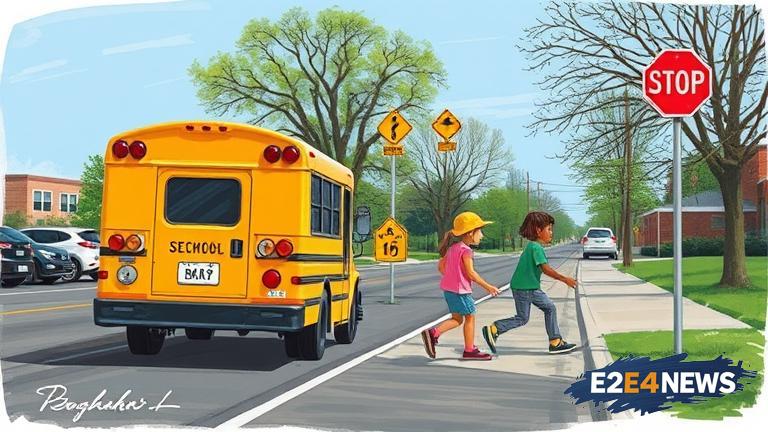As the new school year begins, experts are urging parents, caregivers, and children to prioritize safety when walking or riding to school. According to statistics, the majority of child pedestrian fatalities occur during school hours, with the most common causes being distracted driving, speeding, and failure to yield. To mitigate these risks, experts recommend that children wear bright or reflective clothing, use crosswalks and follow traffic signals, and stay alert and aware of their surroundings. Additionally, parents and caregivers can play a crucial role by educating their children on basic traffic safety rules, such as looking both ways before crossing and not using electronic devices while walking. Furthermore, communities can also contribute to safer school zones by implementing measures such as reduced speed limits, improved lighting, and increased police presence. Experts also emphasize the importance of teaching children how to properly wear helmets and follow bike safety rules, such as riding in the same direction as traffic and using hand signals. Moreover, schools can promote safety by incorporating traffic safety education into their curriculum and encouraging students to participate in safety-related activities. By working together, communities can help reduce the number of child pedestrian fatalities and create a safer environment for kids to walk and ride to school. In fact, studies have shown that communities that implement comprehensive safety programs can reduce the number of child pedestrian fatalities by up to 50%. Moreover, experts recommend that parents and caregivers accompany their children to school, especially during the first few weeks of the school year, to help them develop safe walking and riding habits. As the school year progresses, parents and caregivers can gradually give their children more independence, while still monitoring their safety and providing guidance and support when needed. Experts also suggest that communities establish safe routes to school, which can include designated bike lanes, crosswalks, and pedestrian-friendly infrastructure. By providing a safe and supportive environment, communities can help children develop healthy habits and a lifelong commitment to safety. In addition to these measures, experts recommend that parents and caregivers stay informed about traffic safety issues in their community and get involved in local initiatives to improve safety. By working together, communities can create a culture of safety that benefits everyone, from children to adults. Ultimately, the key to promoting safe practices for kids walking and riding to school is to educate, engage, and empower children, parents, caregivers, and communities to take an active role in traffic safety. By doing so, we can help reduce the number of child pedestrian fatalities and create a safer, healthier environment for everyone. As the school year begins, experts urge everyone to prioritize safety and take the necessary steps to ensure that kids can walk and ride to school safely. With awareness, education, and community involvement, we can make a difference and create a brighter, safer future for our children. The importance of safety cannot be overstated, and experts agree that it is everyone’s responsibility to promote safe practices and create a culture of safety in our communities. By working together, we can achieve this goal and help kids walk and ride to school safely. In conclusion, experts emphasize that promoting safe practices for kids walking and riding to school requires a comprehensive approach that involves education, awareness, and community involvement. By prioritizing safety and working together, we can create a safer environment for kids to walk and ride to school and help reduce the number of child pedestrian fatalities.
